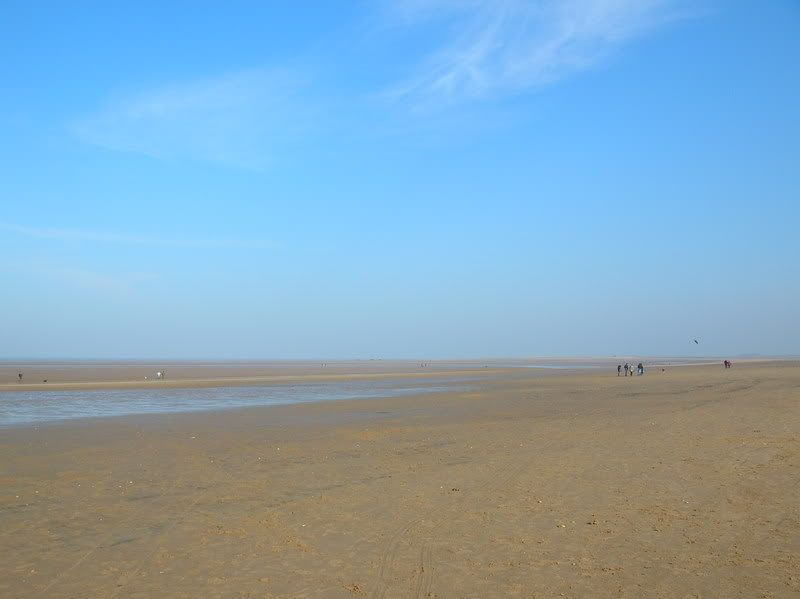As you drive through the village, there’s no sign indicating a golf club, just a simple ‘Beach’.
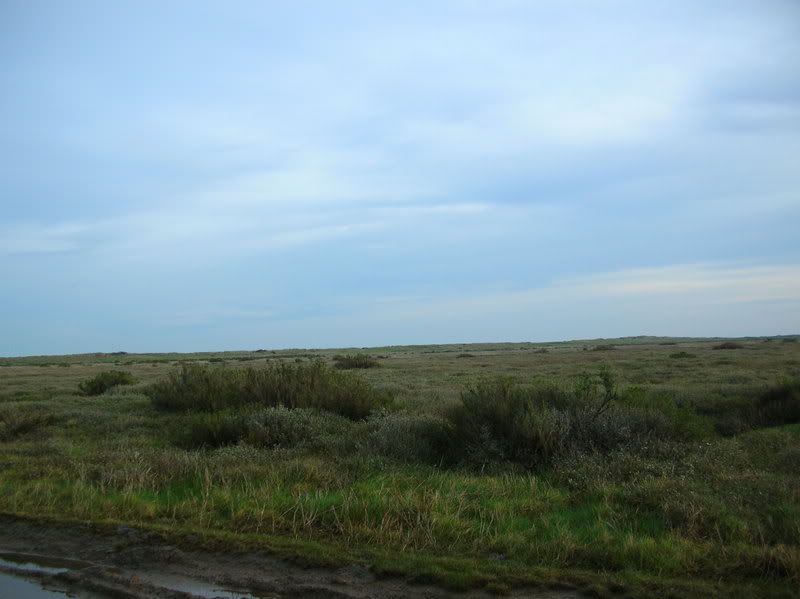
The Clubhouse is one of the very best. Just outside the main door there’s a bowl of water for your dog. Dogs are very welcome at Royal West Norfolk.
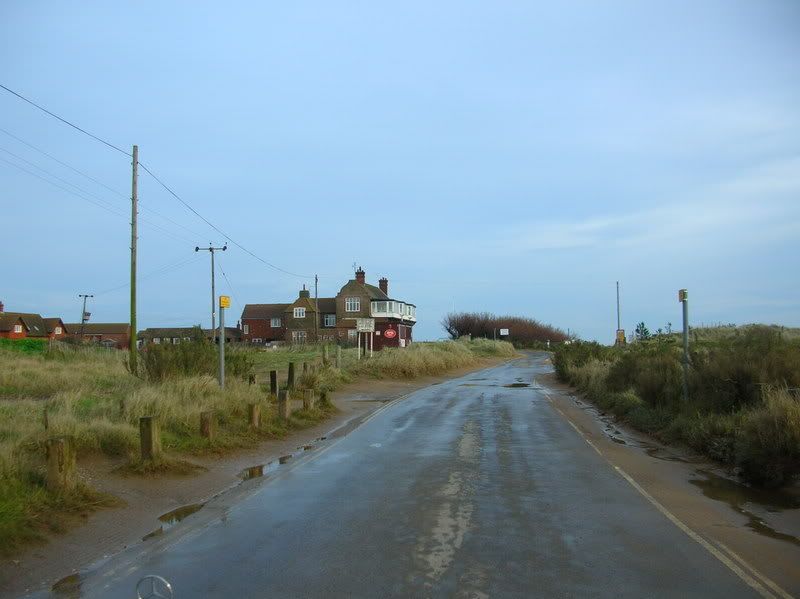
OUT 3409 yards.
The front 9 plays mostly away from the clubhouse with the prevailing wind at your back. The Par4’s are all over 400 yards long.
The gentle first with the green on the left of the picture.
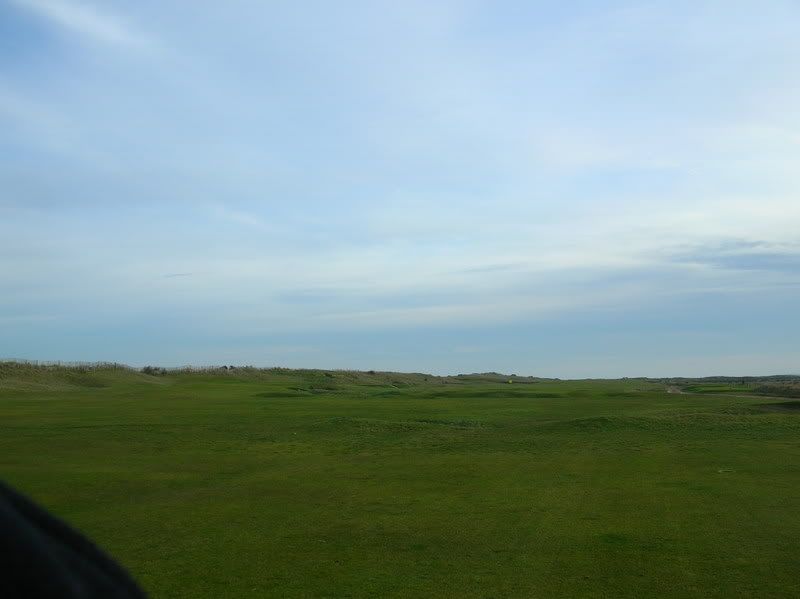
2nd
Tee shot. That’s my dog Jet in the foreground; he likes it best of all the courses he’s been on.
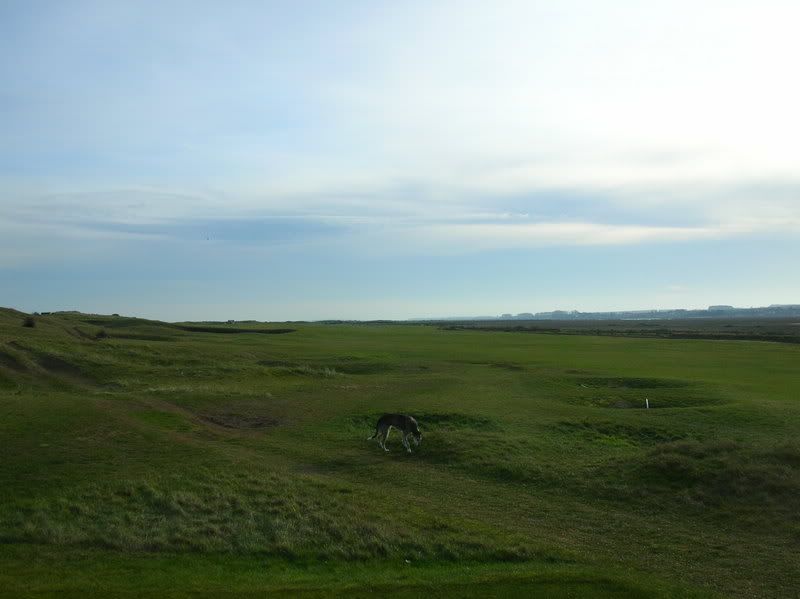
The large dark area on the left above is the first of many deep sleepered bunkers. Mark Rowlinson has memorably described them as ‘ubiquitous wooden fortifications’. The course dates from 1892 and is relatively unchanged.
The day I played the wind was pretty much in my face here (from the SW). Hit a big hook into a facing wind and you get.
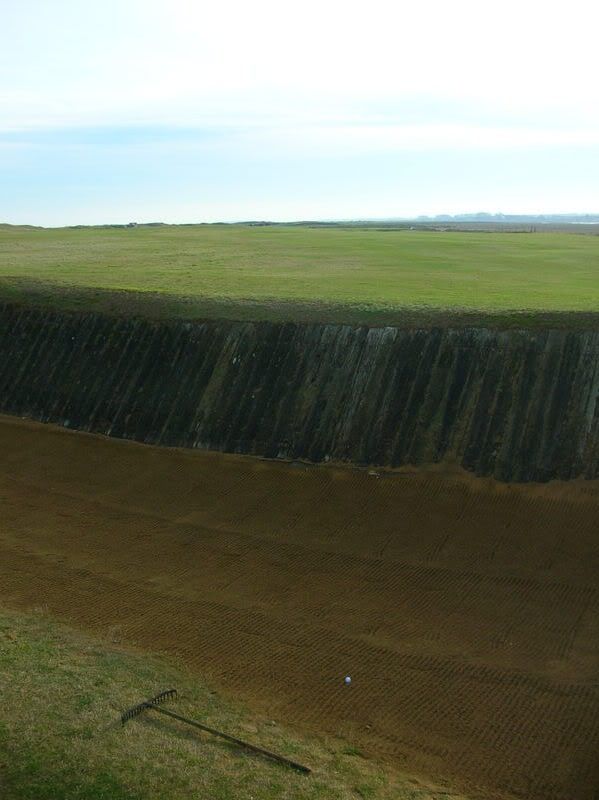

Donald Steel called the third a nearly perfect par 4. The diagonal tee shot.

I hit a ‘perfect’ tee shot in both AM and PM rounds; but with the wind from the right and the strong gravitational pull of a tiny gathering bunker the result was the same. It just shows I’ve got a lot to learn.
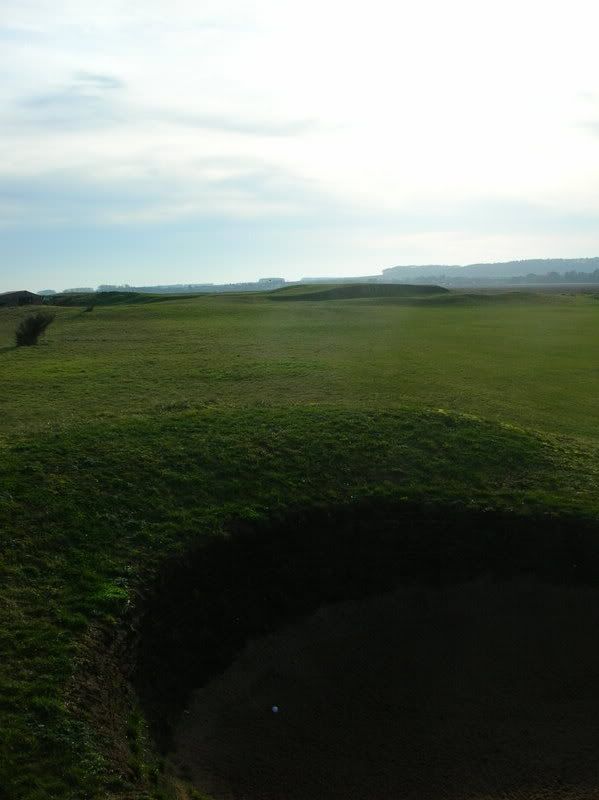
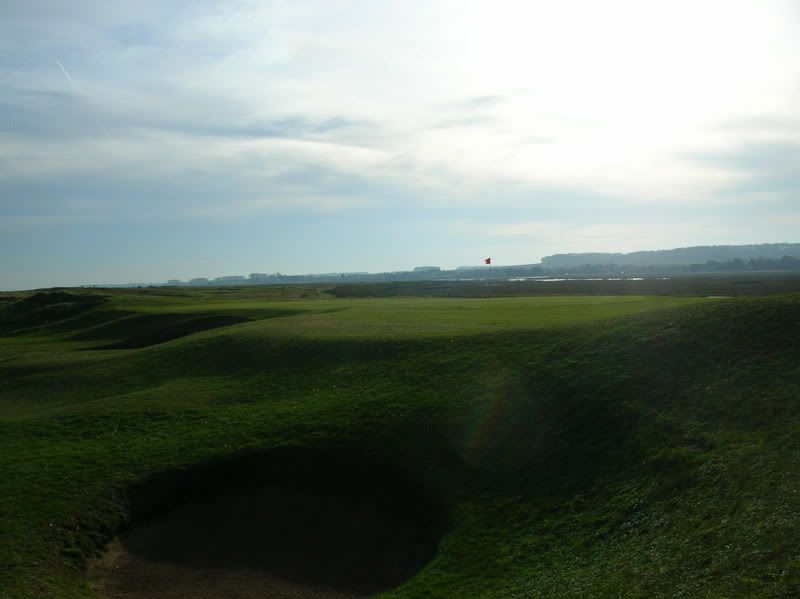
The 4th is only 115 yards but at right angles to the main direction of the rest of the course.
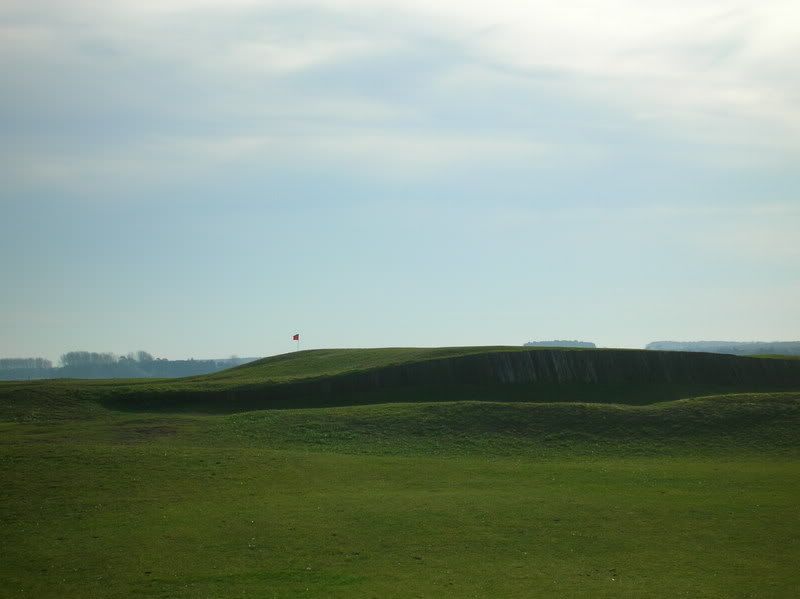
There’s a lot of work going on and unfortunately the sleepers seem to be loosing out to a less distinctive and more generic links reveted style.
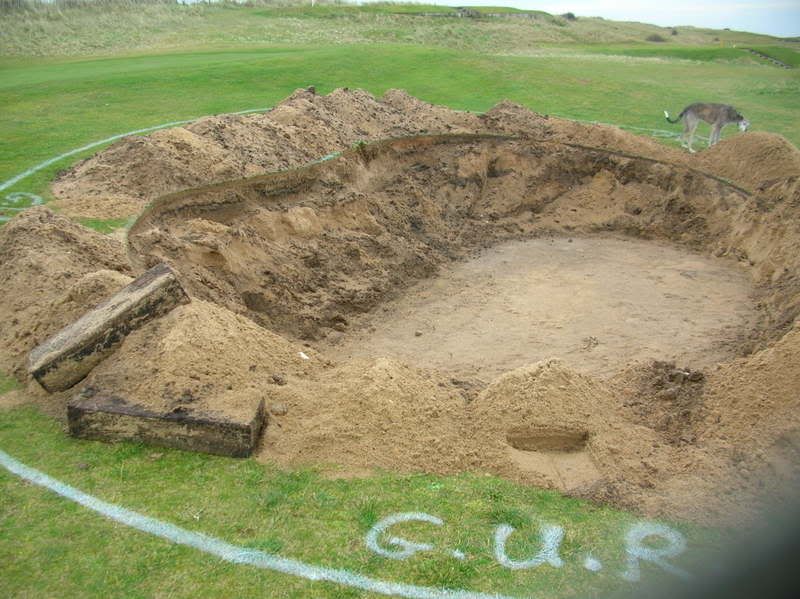
The tee shot on 5 looks imposing from, and must have been terrifying before the Haskell. But today a carry of 190 yards will see you safe to a blind fairway.

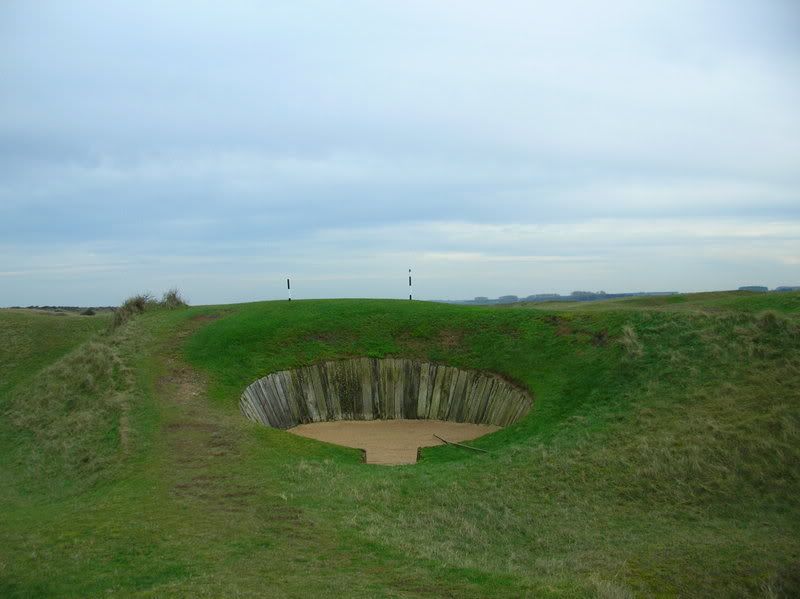
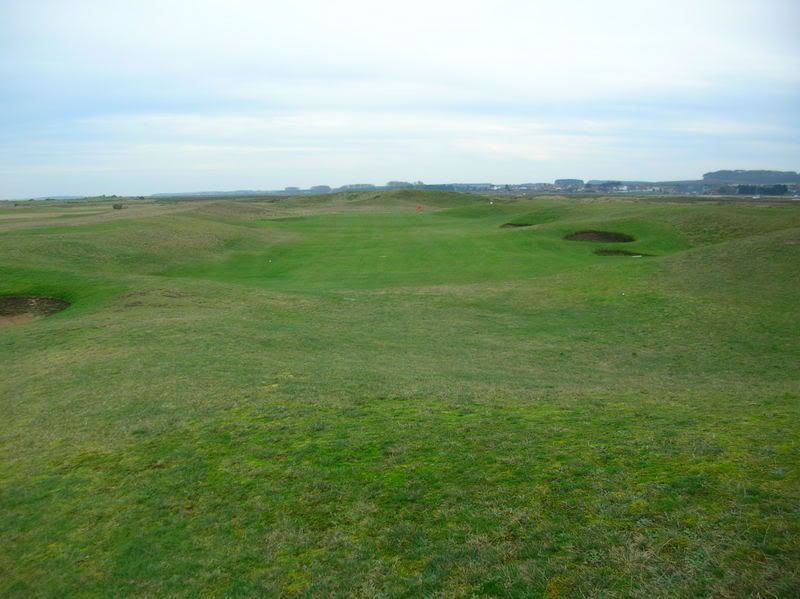
6th plays in opposite direction to rest of front 9. 184yrds.
It’s followed by perhaps the least memorable hole, the 7th at 493 yards, the first par 5.
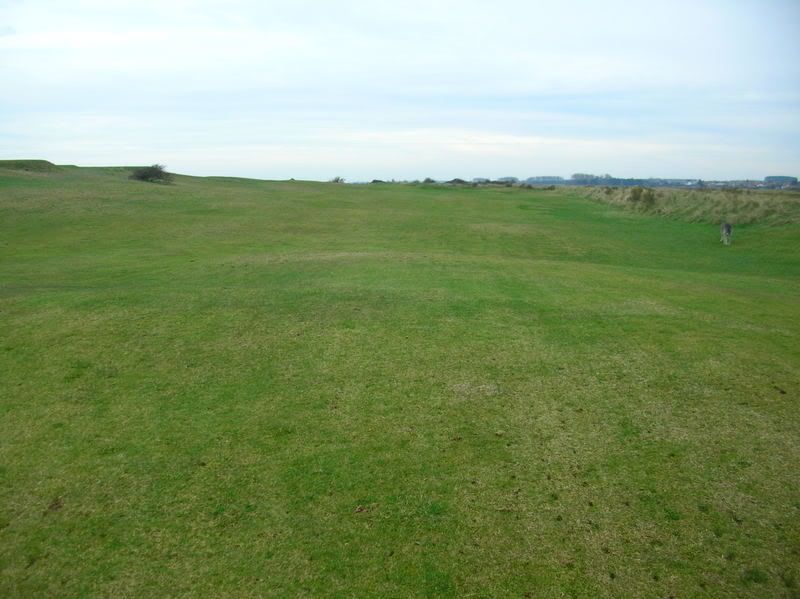
This is immediately followed by the most celebrated hole.
The 494 yards are measured across 3 spits of land in a tidal creek. Most of the time you can play shots out of the creeks as it’s only at he highest tides that they flood (check the 2nd photo at the top, the road to the clubhouse is wet and it would again be cut off that evening). Unusually for a par 5 it’s SI 1.
There’s a marker direction pole on the left hand side of the picture
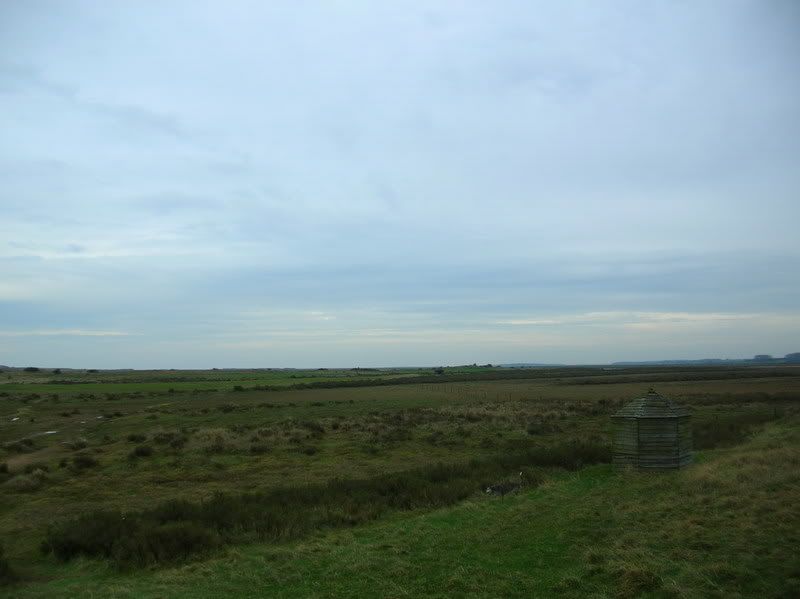
The creek is only flooded at the very highest tides and you can be a member there for months or years before you see them full during a round of golf. This is what you play off if you bite too much off.
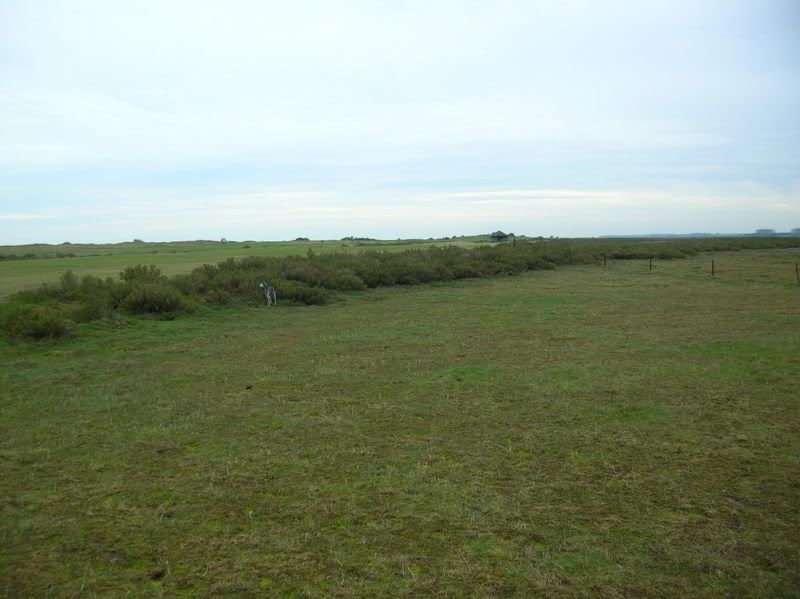
From the centre fairway you have to choose:
A – play down this leaving 150 to the pin
B - play straight on with a carry of at least 200 yards, but there’s approx 40 yards of angled fairway in front of the green
C – Chocks away! My best drive left about 230 yards diagonally across a second creek, to a green that has no bunkers and approx 15 yards of safety from the creek.
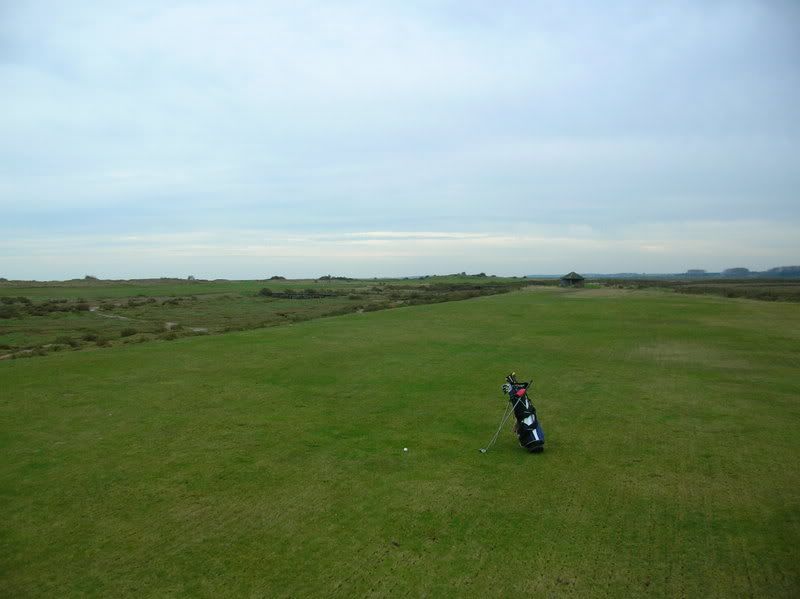
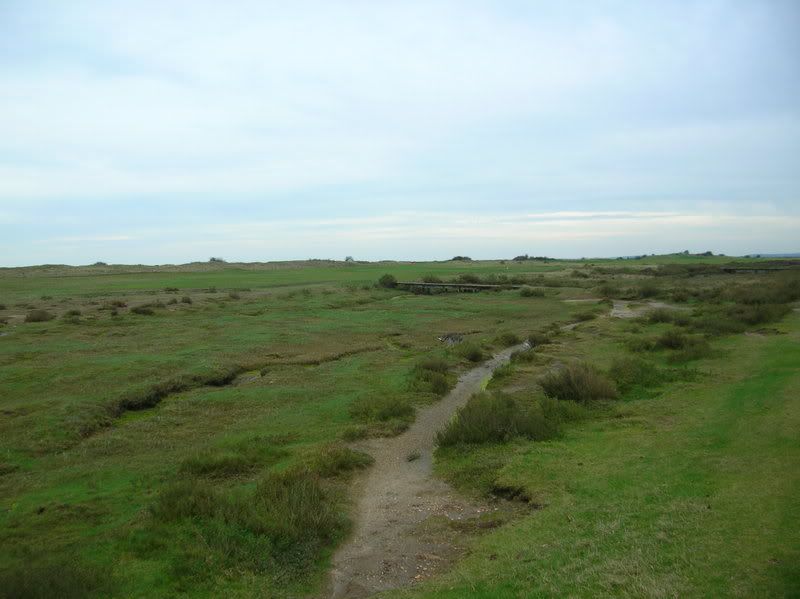
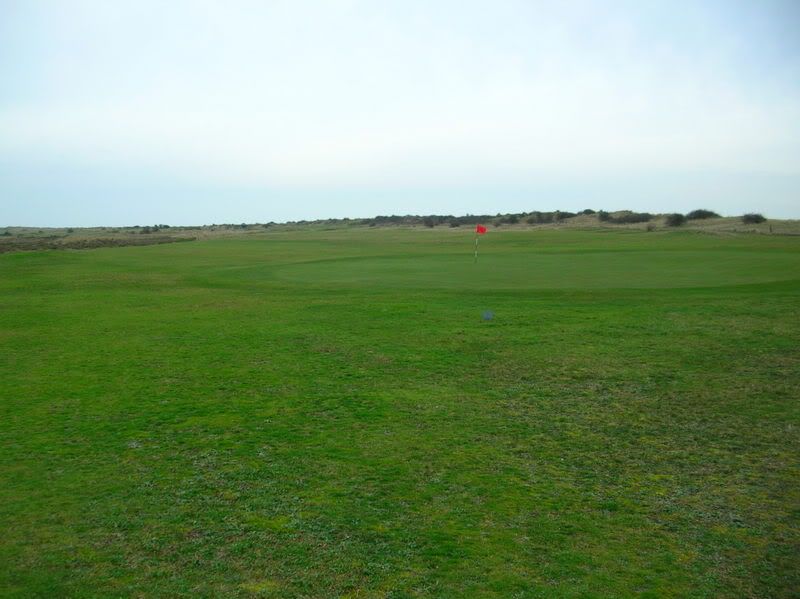
However with wind from the south I prefer the challenge of the 9th, 405 yards, as the best hole.
You cross the creek again to hit a diagonal tee shot.
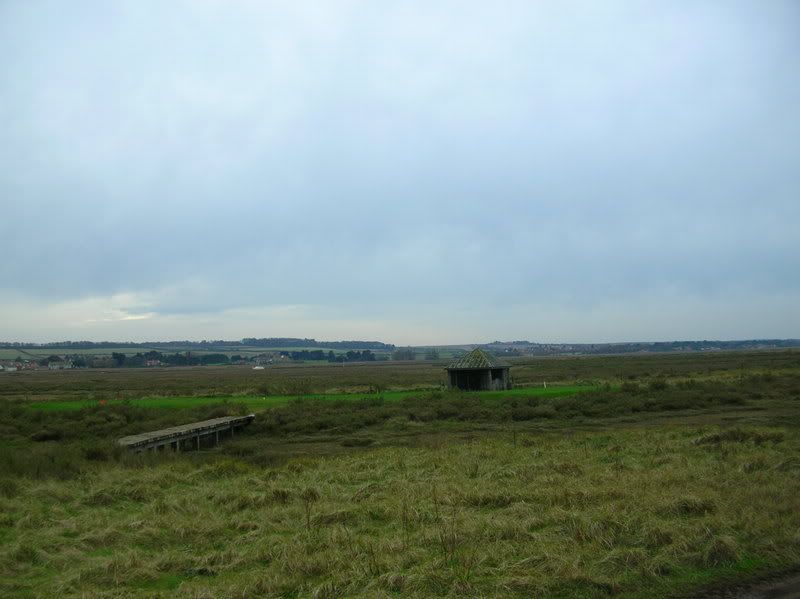
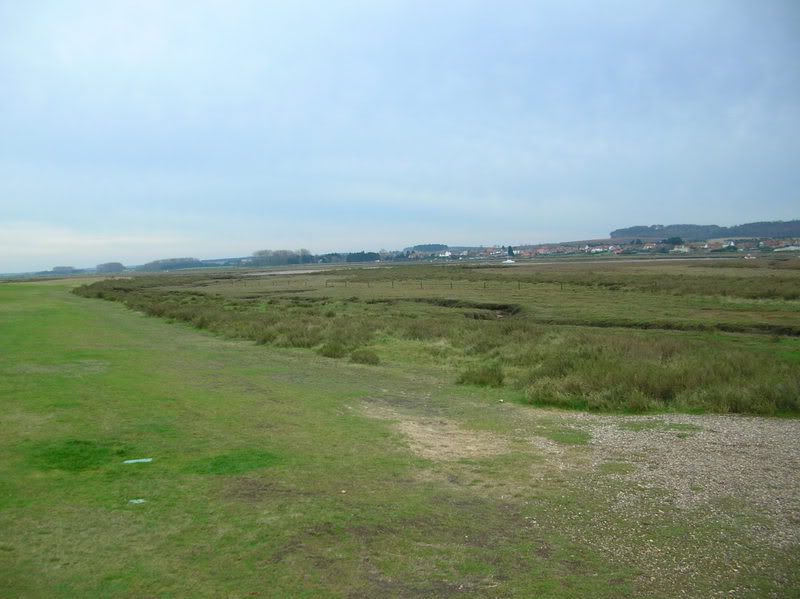
The wind pushed my ball across the fairway and down that bank leaving the tiny target on the left of the picture. With the roll of the ball being sideward it leaves a long shot towards a tiny target, rubbish to the left, and a sleepered wall in front of another bit of creek to the right.
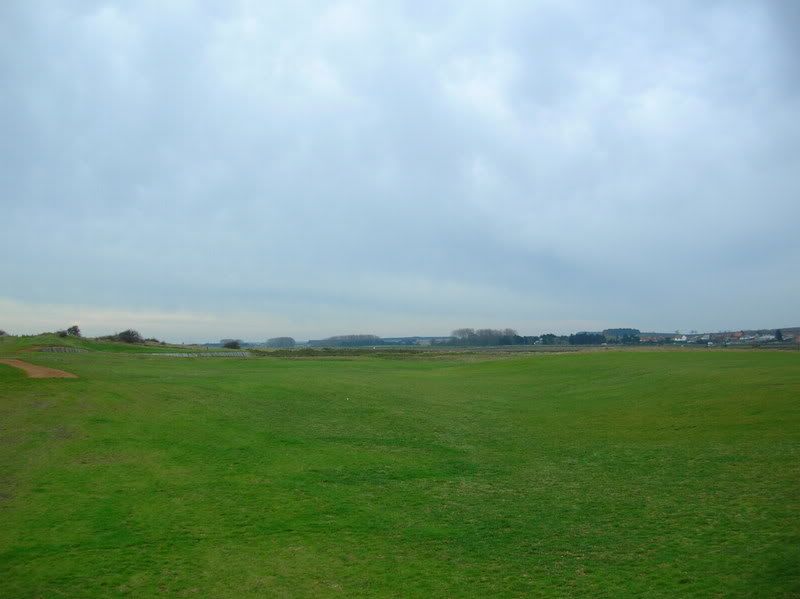
If you ball hits the sleepers it could go anywhere.
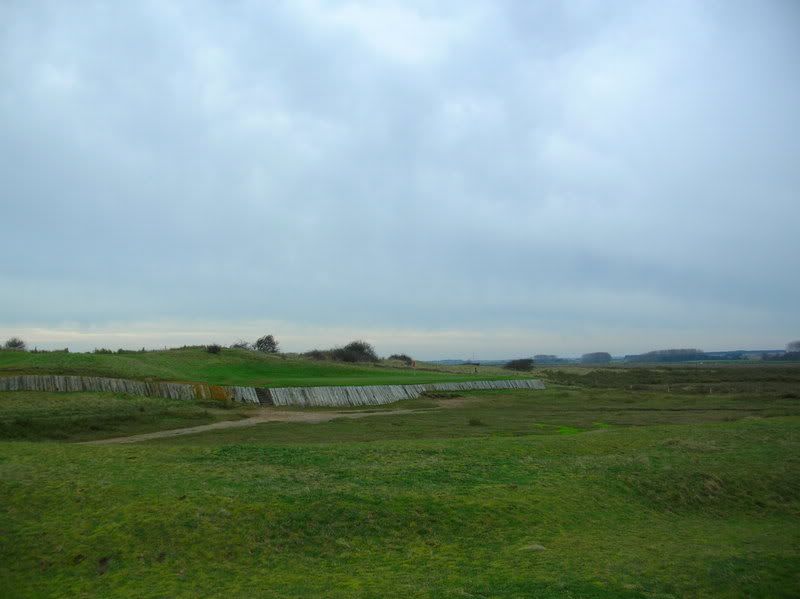
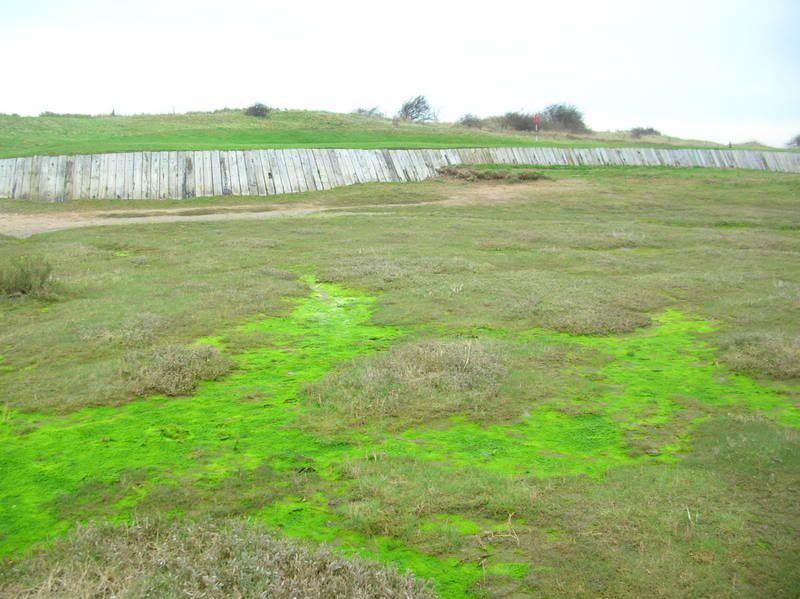
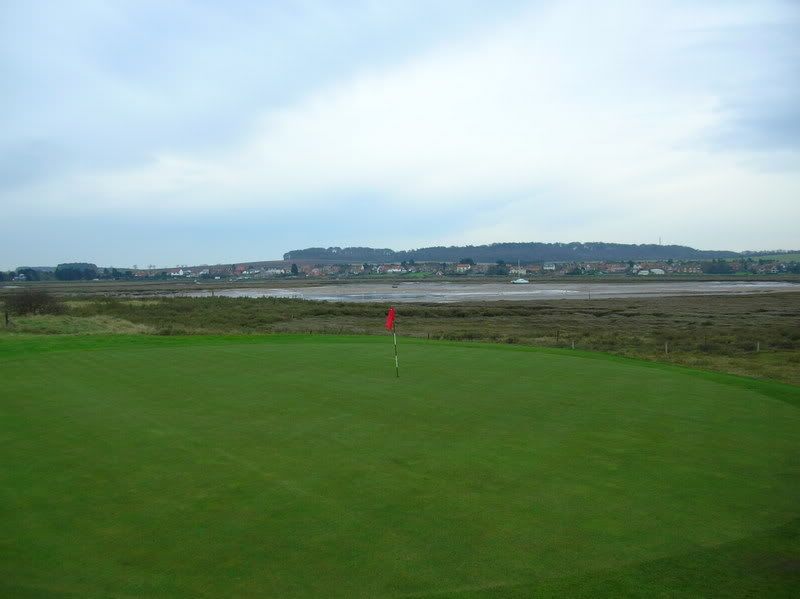
At the half way point it’s time to reflect on the wonderful solitude. East Anglia is famous for its big skies and you are never far from the beach and dog walkers but they do not intrude on your peace. Songbirds are everywhere and even tough there are a few houses visible across the creeks you do feel far from the pressures of civilisation.

